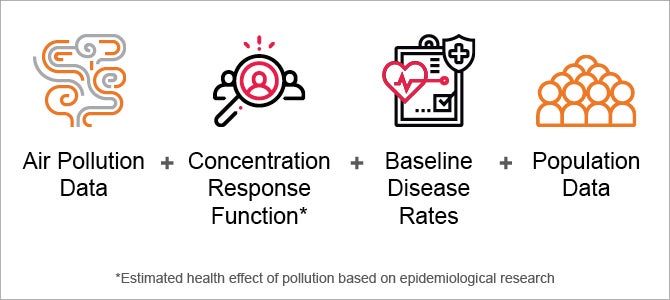Health Impact Assessments
Understanding how air pollution impacts health across neighborhoods
Knowing how air pollution harms health is critical. We also need to be able to pinpoint where and how people are most affected. For this, tools known as Health Impact Assessments (HIAs) help incorporate and weigh public health in decision making.
HIAs combine air quality data with information on the health effects of pollutants (known as a concentration response function), health status, and demographics to reveal how pollution’s impacts differ across communities.

Unequal impacts of air pollution in the Bay Area
EDF and researchers at George Washington University conducted an HIA in the San Francisco Bay Area to understand how air pollution is impacting health and how these impacts vary at a hyperlocal level.
 We estimated more than 2,500 lives are lost and 5,200 children develop asthma every year in the Bay Area due to exposure to traffic-related pollution. And these impacts are not felt equally.
We estimated more than 2,500 lives are lost and 5,200 children develop asthma every year in the Bay Area due to exposure to traffic-related pollution. And these impacts are not felt equally.
Certain areas of the city have 30 times higher death rates from pollution than other areas. In overburdened neighborhoods, up to 1 in 2 childhood asthma cases are from pollution, while the average is 1 in 5 cases across the city.
There are major racial disparities in these impacts—on average, areas with higher percentages of people of color face double the asthma rate from pollution compared to predominantly white neighborhoods.
Better data reveals hotspots and disparities
By using hyperlocal air pollution data and local health information, the analysis revealed large disparities and identified hotspots of health impacts that would not have been recognized with less-resolved data. Specifically, if the analysis had used less-detailed health information, it would have underestimated the deaths from pollution up to 50% in Oakland compared to data that captured health disparities.
Local data can support equitable decision-making
HIAs, using local data, can be powerful tools for understanding how pollution worsens existing health disparities. They can also reveal the health benefits from reducing pollution through mitigation actions and policies.
Learn more about the research.
